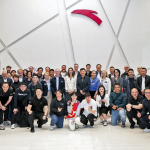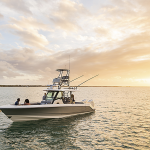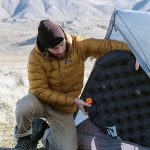Earlier this month The B.O.S.S. Report reviewed OIAs bi-annual retail top-line report and covered in detail the macro trends in todays retail environment as well as the performance of the Outdoor Specialty Market (See BOSS_0449). This weeks issue will look at the various performance metrics of outdoor chain retailers reported by OIA and analyze the motivating factors behind the changing nature of this retail channel.
OIAs research clearly shows that even though overall Chain average selling prices are holding steady compared to last year, in the equipment and footwear categories, which make up about one-third of sales, chain retailers are feeling some heavy price competition.
For the six-month period from February through July equipment sales in chain stores fell 8.3% when measured in dollars, but climbed 32% when measured in units sold. This translates into a $14 decline in average selling price.
This decline in equipment ASPs at chain stores could mean one of two things. Either chain outdoor retailers are feeling pricing pressure from mass merchants like Wal-Mart or Target, or chain outdoor stores are increasingly using equipment as a loss-leader and relying higher margin apparel and accessory sales to stay profitable.
Either way, the price erosion in theses categories can work their way up to specialty retailers, and this becomes very evident when looking at tent sales through both chain and specialty channels. Chain retailers sell recreation tents for $72.70, and moved over 600,000 units over this six month period. The average selling price of a recreation tent at a specialty store is $219.79, and this price is down from $231.36 two years ago. Only 6,400 were sold through this channel over the six-month period.
While pricing pressure in this category has had a substantial impact on the specialty channel, evidence points to a recovery on the horizon. Kellwood is the parent company to American Recreation, which is in turn the parent company to Sierra Designs, Slumerjack, Kelty, as well as several mass-market brands. During a recent conference call with financial analysts, Hal Upbin, Kellwoods chairman and CEO, said he feels the market for camping product becoming healthier, particularly for specialty retailers. However he was also happy to report that the mass market is seeing a stop in the price deflation it has experienced over the past few quarters.
“Following three years of acute price deflation in which selling prices dropped 20% to 25%, selling prices at retail have flattened ” said Upbin. “The market for camping products is improving, especially for the specialty store channel of distribution which carries our Sierra Designs and Kelty brands.”
Climbing equipment is also showing some very evident changes to consumer spending habits, especially in harnesses, shoes and accessories. The influx of inexpensive climbing shoes and harnesses made in Asia is turning these items into commodities and driving down perceived value.
Specialty retailers saw the average price of a pair of climbing shoes drop from $105.49 to $97.90 over the six month period covered in the Top-Line Retail Sales Report. The number of units sold dropped even more dramatically, from roughly 57,000 in the first six months of 2003 to 45,000 for the same period of 2004. This caused revenues from climbing shoes to fall 37.4% to $4.4 million at specialty shops across the country.
On the other side of the fence, the average selling price of climbing shoes dropped even more dramatically at chain stores, from $98.76 last year down to $80.06 this year. The cheaper prices attracted consumers to chain stores in droves, increasing units sold during the six-month period by 255%, from roughly 14,500 last year to over 51,500 this year. This boosted climbing shoe revenues at chain stores by 188% to $4.1 million.
The same trend is happening with harnesses, where revenues at specialty stores fell 15.7% while revenues at chain stores jumped 172%. Climbing accessory revenue at specialty stores stayed relatively flat while chain stores saw a 96.7% increase. While these trends do not bode well for the specialty retailers in the climbing business, manufacturers are likely not complaining since 2.3 million additional units were sold at retail last year.
The outdoor apparel market seems to be quite healthy in chain stores and specialty stores alike. Through both channels combined, apparel makes up 33% of overall sales.
Chain retailers saw 14.5% increase in revenues from apparel and a 15.5% decrease in units sold indicating much higher average selling prices. During the same six-month period, specialty retailers sold 14.8% more units and revenues increased by 12.6% indicating relatively stable ASPs and healthy growth throughout the category.
The growth in the apparel category was primarily driven by the booming sportswear business at both specialty and chain stores, but womens specific sportswear and technical apparel helped drive business as well.
While chain stores are certainly feeling some pricing pressure from mass market retailers, and in turn that pressure is working its way up to specialty stores, that pressure appears to be abating in many equipment categories, like tents and packs. The climbing market continues to be in a state of flux, driven by diving prices and the transformation of some very specialized equipment into a commodity.
While there is much change in both specialty and chain retail channels, the industry as a whole is healthier than it has ever been. OIA estimates that the outdoor industry grew roughly 11% from 2001 to 2003. With the very proactive approach OIA as a group and its member companies as individuals have taken in the past year, this growth should continue.















